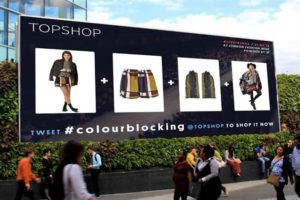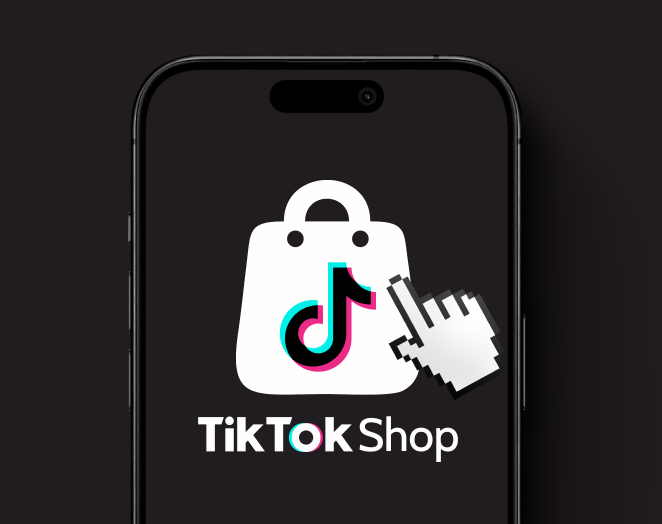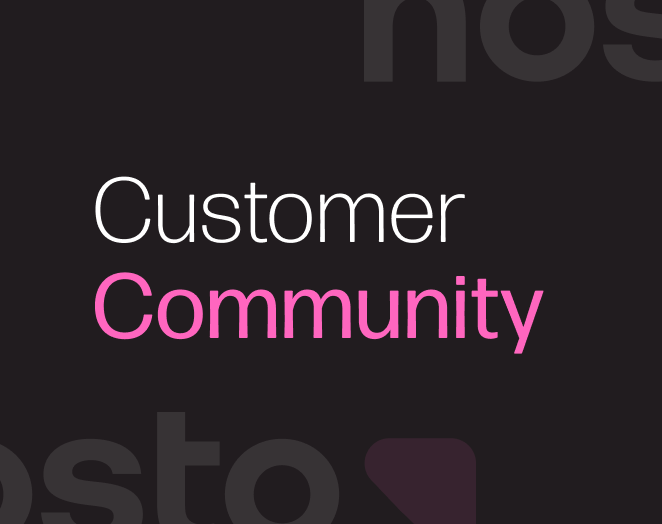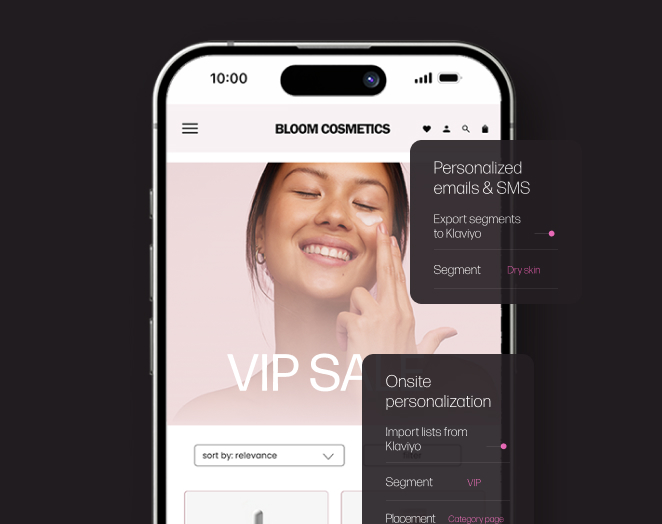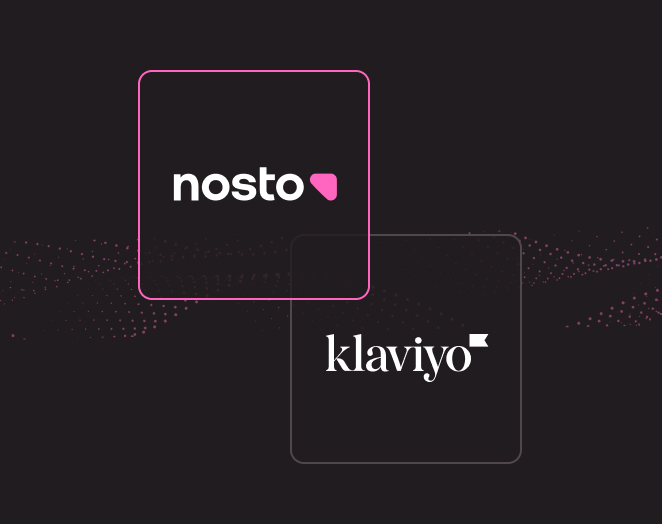How to Grow Retail Brand Awareness & Discoverability
Retailers both large and small are trying to keep up with ever-changing consumer habits in an increasingly digitized world. With new brands popping up all the time and eCommerce sales on a steep incline, keeping your retail brand at the forefront of people’s feeds is becoming a trickier game. Here’s how to grow retail brand awareness and discoverability in these uncertain times.
First things first, if you want to grow more brand awareness you have to be sure you’re putting the people you want buying your product at the forefront. This is the best baseline for not just growing retail brand awareness, but getting visibility from the people most likely to engage with your brand.
Know your audience
In the marketing days of yore, retailers didn’t know much about their audience or customers. You might have placed an ad for a women’s beauty brand in a glossy women’s print magazine (Mad Men-style) and called it a day.
Today, the average consumer is much more educated and discerning about the products that are out there. They care about things such as sustainability and the ingredients that go into making a product—even who the CEO of the company is and the values they represent.
Instead of appealing to the masses, retail marketers need to start digging into their analytics to see who is following them via Google Analytics, social media insights and any other tool your team uses to track audience data.
As soon as you know who is already interested in the brand and who you want to target, make efforts to get to know these consumers on a more intimate level. Ask questions like:
- Where are they most active online (online forums, social media channels)?
- What are their interests?
- Where do they live?
- What is their age range?
- What values are most important to them?
The more you can find out about your audience, the better informed you will be at getting your brand in front of them in a way they feel compelled to engage with.
Have a more customer-centric mindset
If you want to grow retail brand awareness and discoverability, know that it is a consumer’s market. As such, your brand should take note from Jeff Bezos, CEO of Amazon, who famously said: “The most important single thing is to focus obsessively on the customer.”
Essentially this means tailoring your brand experience to what the customer wants instead of what corporate wants. Of course, these things can overlap (and often do), but sometimes we as marketers can get so caught up in trying to grow our brand that we lose sight of the preferences of the people we’re marketing to.
More businesses do this than you would think. In our report, Bridging the Gap, 92 percent of marketers said they believed their content resonated as authentic to consumers, however, only 51 percent of consumers perceived brand content to be authentic. Having a customer-centric mindset is about building that bridge between what you think consumers want and what it is they actually want.
Tips for increasing retail brand awareness and discoverability
Now that we know the two main starting points that form a baseline for growing brand awareness, i.e. knowing your audience and being customer-centric, here are specific strategies you can implement to grow brand awareness and product discoverability for your retail brand:
Always optimize for search
What is the first thing people do today when looking for a specific product? They Google it.
Are the key terms and phrases you’re using on your web pages, product pages and social media posts optimized for popular and/or niche search terms? If not your brand is missing out big time on a lot of potential organic traffic. Learn tips for growing eCommerce SEO, and how to avoid common pitfalls.
Leverage omnichannel strategies
The traditional buyer’s journey is no longer linear. It’s more likely than not that your audience can be found in multiple places and in various stages of the purchasing process. If your audiences are active on social networks, establish and build your brand presence on the most relevant social platforms—through both organic and paid strategies.
Promote your brand across the mediums of your target audience, such as mobile, large publications and email newsletters. Maybe even try placing an ad on your audience’s favorite Podcasts and see what happens. You also shouldn’t forget about trying to recapture those who may have landed on your site but left before completing a purchase by running a retargeting ad campaign.
When aiming to be a customer-centric brand, you have to think about each possible customer touchpoint. If the virality of Glossier has taught us anything, it’s that people love good branding and consistency. Make sure your retail brand is consistent—producing quality content wherever it has a digital presence. More on specific omnichannel strategies here.
A retail brand that has knocked the omnichannel strategy out of the park in UK-based fashion company TOPSHOP. During London Fashion Week (#LFW) they ran a campaign on digital billboards that were within 10 minutes from their stores, displaying their latest fashion trends from #LFW from Twitter.
The result of this creative campaign? TOPSHOP experienced a 75 percent increase in sales on featured products—and 11:1 ROI. The campaign was even recognized at the prestigious CLIO Image Awards and was awarded Digital Marketing Campaign of the Year at the 2015 B&T Retail Week Tech & eComm Awards.
Invest in content
Between email, social media channels, websites and digital ads, a lot of content is expected from brands these days. Make sure your team isn’t just investing money, but also time in curating the right content—images, videos, articles, etc.—for your brand. To make this process easier and more customer-centric, many brands turn to user-generated content (UGC) to up their marketing game.
When you do this, you’re using the (oftentimes free) content that people are already creating for your brand on social networks. This means less in-house work for you, like hiring expensive creative teams to create custom brand content. Plus, 79 percent of people say that UGC impacts their purchase decisions, making this a highly effective content strategy for brands.
Kmart Australia takes advantage of their customer loyalty by encouraging people to upload photos of products they purchased from Kmart to Instagram using the hashtag #kmartaus in order to be featured on their website. They also make the instructions clear and simple to follow.
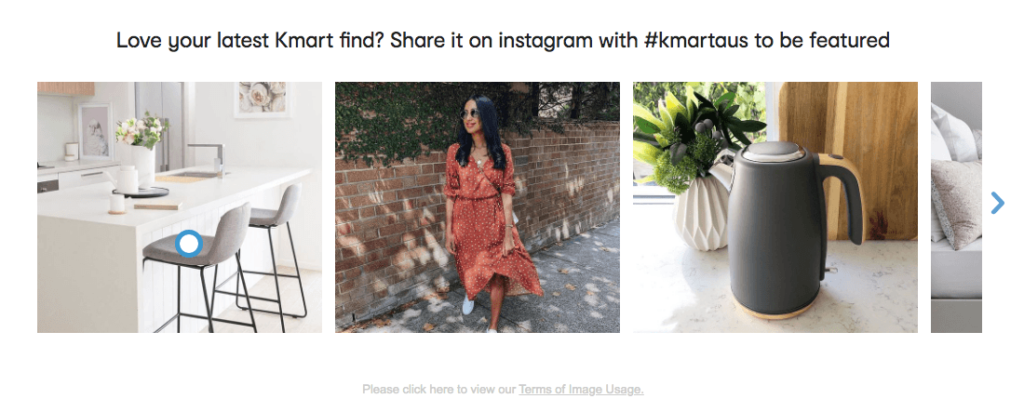
What better way to see the world from your customer’s point of view than to actually put their point of view front and center in your marketing?
Take advantage of influencers
Many of us are already familiar with influencer marketing. This became a popular retail brand awareness strategy because leveraging an influencer with thousands (if not millions) of followers is a good way to get your products in front of people you may have not reached otherwise.
Marketing via influencers with mega followings, however, is becoming an increasingly expensive and inauthentic strategy for retailers. Plus, the more followers an entity has, the less engagement they tend to garner. In fact, only 8 percent of people stated that influencer-created content would influence their purchasing decisions.
To encourage engagement and customer loyalty, many brands have started to form their own creator communities—effectively turning their passionate customers into influencers.
Bath, body, skin and haircare company Lush Cosmetics decided to create their own community of brand advocates and encourage people with smaller followings to post content about Lush, which they then used on their website and social media channels.
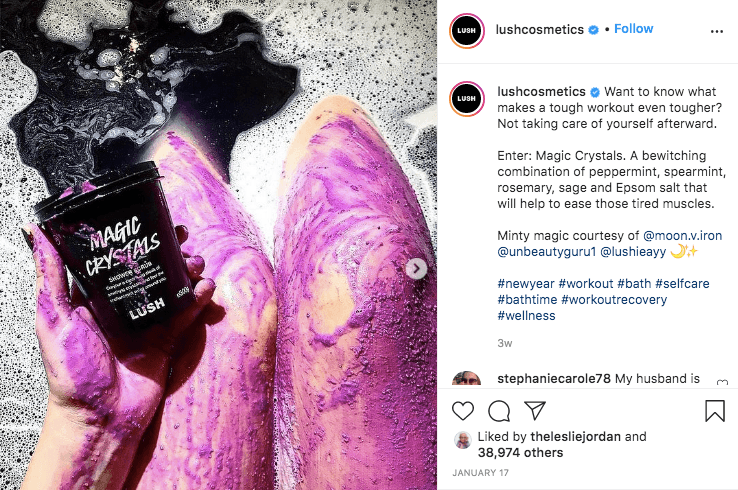
Sabine Shwirtz, former Community Manager at LUSH Cosmetics North America, said “Our personalization is really organic and based on what users want. I firmly believe that people create the content they want to see.”
For many marketers, it’s hugely beneficial to take advantage of micro-influencers—people with small, but highly engaged followings and those who are already expressing enthusiasm for your brand. You can learn more about micro-influencers here.
Run a hashtag campaign
Want an easy way to get people posting and talking about your brand? Try a hashtag campaign! Pick a theme to incentivize people to post about your brand online with a hashtag (and also tagging your brand). Try to make it something that people can feel good about and that will touch on their most important values.
Trek Bikes ran a campaign, #GoByBike as a way to encourage people to share in a collective effort to combat climate change by riding their bicycles.
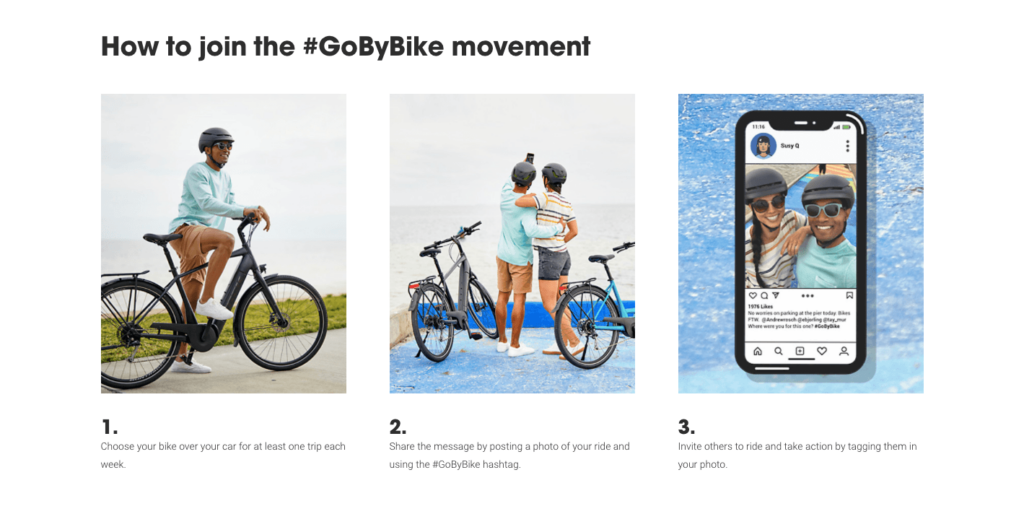
For the campaign, people were asked to take their bike somewhere instead of their car, take a photo of their Trek bike excursion and post it to social media using the #GoByBike hashtag. Learn more about the campaign here.
Something your brand can do to make your hashtag campaign even more effective is turning it into a contest where the winners get awarded free products.
Seek out quality partnerships
Picking out influencers or brands who have already captured the attention of the audience you’re trying to get in front of (but who are not in direct competition with you) can be a valuable way to grow retail brand awareness.
Try identifying key websites with a good domain authority (DA) where your brand can guest blog. You can also partner with a mega (or micro) industry influencer and have them use your product and report back to their following and promote said product.
Feature shoppable social proof on your eCommerce site
Once you’ve attracted people to your site, continue to drive discovery of your products by featuring inspirational social proof. This takes people quickly from the point of inspiration to point of purchase. Wanted Shoes did this with their website to show browsers their products in real-life scenarios—increasing online conversions by 30 percent:
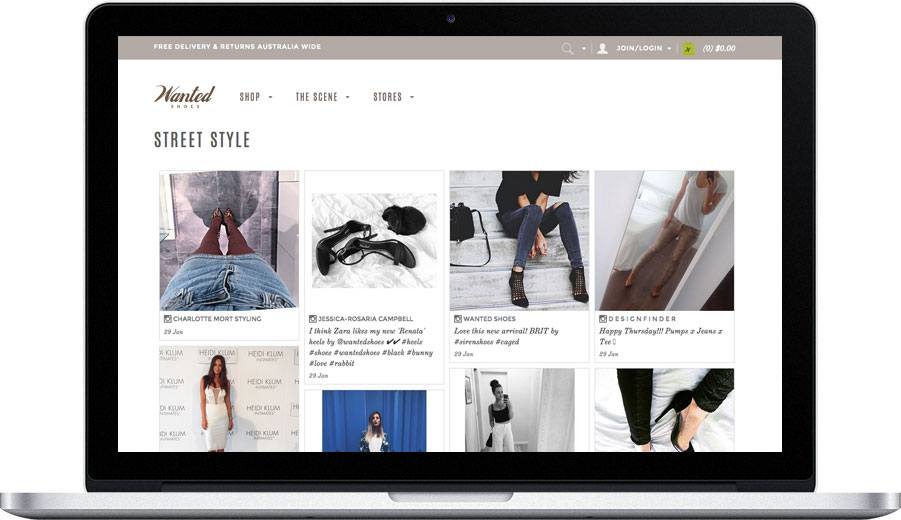
“With a bounce rate of just 5 percent, it’s the most engaging page on the website. 95 percent of users click through to specific product pages. We have no doubt that the social catalog certainly does assist in the overall path to purchase” said Jennifer Christodoulou, former Marketing Manager at Wanted Shoes
Turn that awareness into profits for your business via social proof images that people can click on and be taken directly to shop! Learn more about this strategy.
Know what to measure and ready, set, benchmark!
When you’ve done your in-depth analysis and research and have brainstormed a few campaigns, don’t forget to record your numbers and start benchmarking. Know what awareness metrics matter most to your brand, and watch as the progress unfolds.
If you are interested in using a robust, enterprise-level UGC tool to grow retail brand awareness and push out more content (those people actually want to see) fill out our free demo form today!

